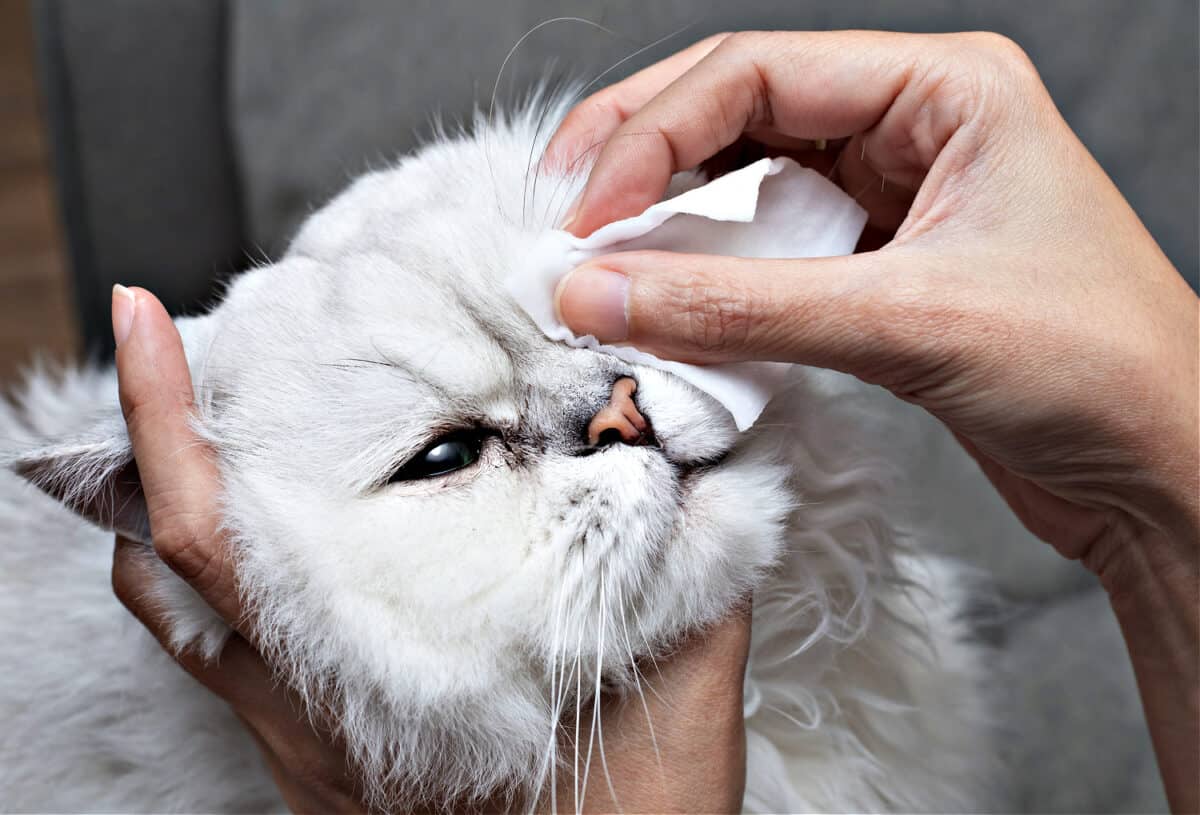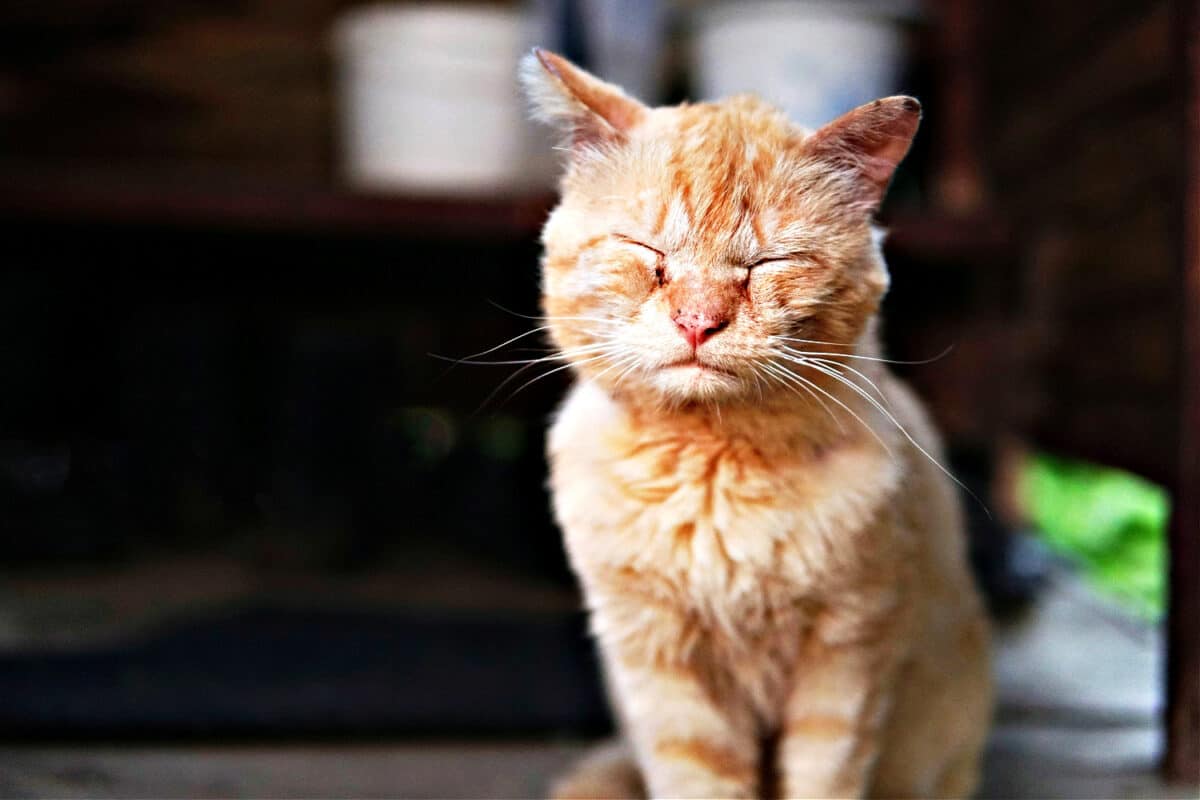Cats can get eye infections. These eye infections in cats may come from bacteria, fungi, or a virus. Young cats and old cats can suffer from them. Stress and living close together may make it worse. Is your cat rubbing its eyes or showing signs of redness?
Are you worried about what might be causing it? This article will explain the common causes and symptoms of eye infections in cats. You'll learn how it might affect both young and old cats.
Read on to find out what signs to watch for, what a vet might do, and what you can do to help your furry friend.
Common Causes of Eye Infections in Cats
Cats can get eye infections at any stage of life. When cats live close together, like in shelters, an infection can spread easily from one to another. Many things can cause these infections, such as bacteria, fungi, or viruses like Calicivirus.
Young cats are often more at risk. Their immune systems may not be strong enough to fend off bacterial infections like Chlamydia and Mycoplasma.
Stress, especially in shelters or after a vet visit, can make them more prone to disease.
Older cats, even those in a stable home, aren't immune to infections. If they suddenly show signs of an eye problem, they should see a vet without delay.
It might not just be an infection; it could be a symptom of something more serious, like trauma to the eye or another underlying illness.
Whether young or old, living in crowded conditions or in a loving home, cats need our care and attention to stay healthy.
If you notice something off about your cat's eyes, don't wait; consult a professional. Their eyes are delicate, and prompt treatment can prevent more serious problems.
SIGN UP FOR THECATSITE'S EMAIL UPDATES >

Recognizing Symptoms of Eye Infections in Cats
Recognizing an eye infection in your cat early on is key to effective treatment. The symptoms may vary, but there are some common signs to watch out for.
Initial Signs
In the beginning, only one eye may show symptoms. As the infection progresses, it might affect both eyes. Here's what to look for:
Bloodshot Eyes
The white part of the eye may turn red.
Goopy Eyes
Discharge can appear clear, yellow, or even greenish.
Rubbing or Blinking
Your cat might rub her eyes or blink a lot.
Third Eyelid Showing
Sometimes, the third eyelid can become visible.
Advanced Symptoms
As the infection worsens, you may notice additional symptoms:
Upper Respiratory Signs
These might resemble symptoms of a cold in your cat.
Pain
Observe if your cat seems to be in pain.
Puffiness
Swelling or puffiness around the eye area can occur.
Crusty Eyes
This may cause the eyes to be hard to open.
Sensitivity to Light
A cat with an eye infection might shy away from bright lights.
What to Do If You Notice These Symptoms
If you observe any of these symptoms in your cat, it's important to take action quickly. Eye infections can lead to more severe issues if left untreated.
Consult your veterinarian as soon as possible. They can accurately diagnose the problem and recommend the appropriate treatment. Your cat's eyes are sensitive, and professional care is essential to ensure a full and quick recovery.

What will the vet look for?
The most obvious and least expensive item to check off the list is trauma to the eye: Was there a catfight or a run-in with the dog? Did the cat fall or get tangled up in his toy?
Kitty’s doctor may do a swab of any discharge around the eye to decide if the infection is viral or bacterial.
There’s also a dye that can be used (Fluorescein eye stain) with a blue light to see if there are foreign objects or ulcers that can’t be seen during the regular exam.
“My older cat, Josie, had a horrendous eye infection which got worse fast. She had a corneal ulcer. I had to put some strong eye drops in her eye every hour for two weeks,” says Troant.
What is the treatment for eye infections in cats?
For a bacterial infection, antibiotics are given. Viral infections usually run their course on their own but the vet may prescribe antibiotics here as well, in case bacteria and the virus are both present.
There are also topical creams or eye drops for viral infections.
Fungal infections have their own medications. If the eyes are particularly goopy or crusty, a damp, warm cloth will clean the area and soothe the pain.
Don’t scrub the area, just apply the cloth and wipe gently. Don’t assume the infection will go away on its own.
Whether a viral or bacterial infection, the delay will not only be painful for Kitty, but it could spread to your other cats or cause further damage to Kitty’s health.
“My Callie has frequent eye problems. Usually, it's caused by an eyelash rubbing her eyeball, she aggravated it while rubbing or a speck of dust or it’s an allergic reaction,” says Stephanietx.
“Try to keep Kitty from rubbing her eye.”
Even if it is something as simple as a turned-in eyelash, it’s hard to diagnose on your own. A visit to the vet is a must to protect Kitty’s vision.
Don’t use human eye medications on Kitty, or another cat’s prescription. You could transfer bacteria from the tube to Kitty and give the wrong medicine, which would then delay the right treatment and make things worse.
Conclusion: Protecting Your Cat's Eyes
Cats are wonderful creatures that bring joy to many homes. Their eyes are one of their most striking features but can also be susceptible to various infections.
Whether it's a young kitten in a shelter or an older cat enjoying the comfort of a loving home, eye infections can happen to any cat.
By understanding the signs of eye infections and knowing when to seek professional help, you're taking important steps to keep your cat healthy.
Remember, the symptoms listed here are guidelines to help you. A veterinarian is the only person qualified to diagnose and treat your cat's eye problems.
Prompt action can prevent further complications and ensure a speedy recovery for your furry friend.
Don't wait for the problem to get worse. If you notice anything unusual about your cat's eyes, make a visit to the vet.
Your cat relies on you for care and love, and tending to their health is one of the most vital ways to show that love.
SIGN UP FOR THECATSITE'S EMAIL UPDATES >
Comments? Leave them using the comment section below. Questions? Please use the cat forums for those!
Note: We may get commissions for purchases made through links on this page.

![Ringworm in a cat, How to deal with ringworm in cats [Inc. The Housecleaning Regime]](https://thecatsite.com/c/wp-content/uploads/2014/09/ringworm-260x170.jpeg)


3 comments on “Eye Infections In Cats – Causes, Signs, and How to Help Your Pet”